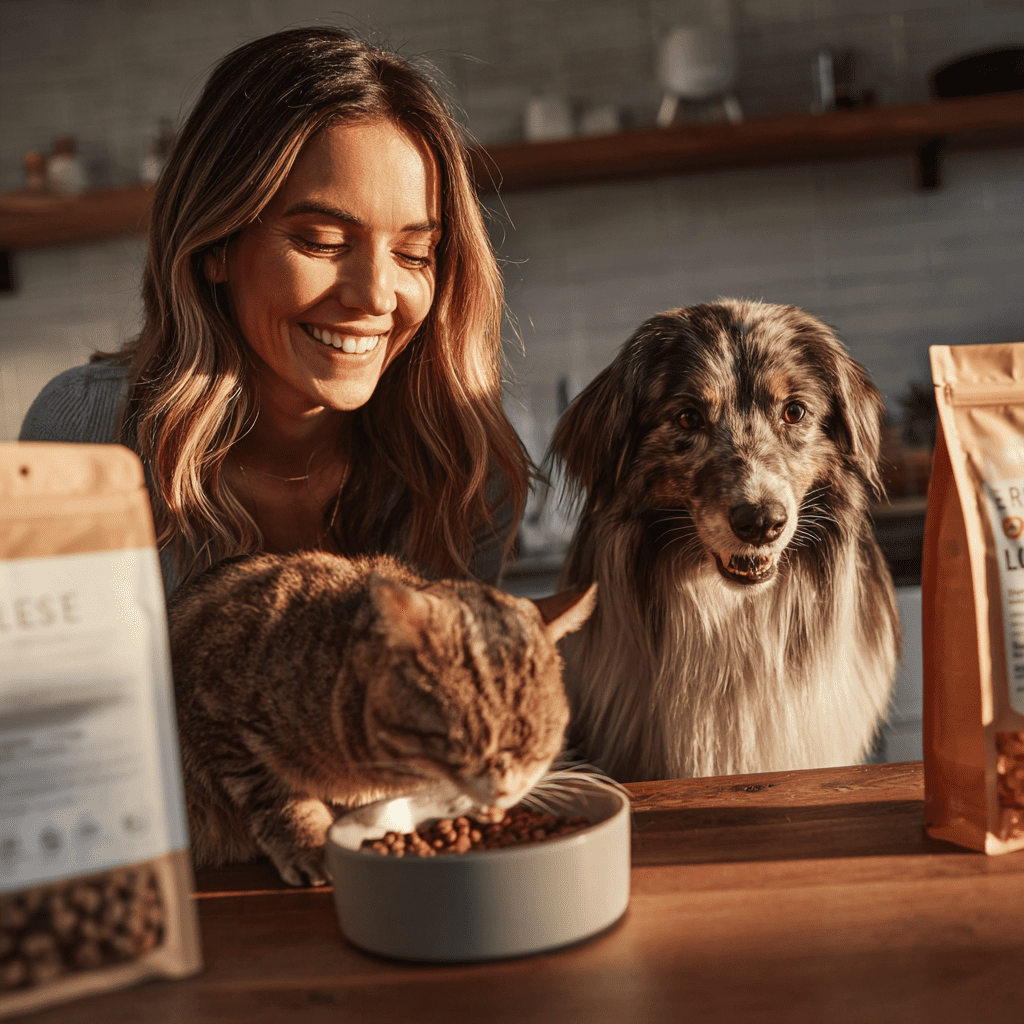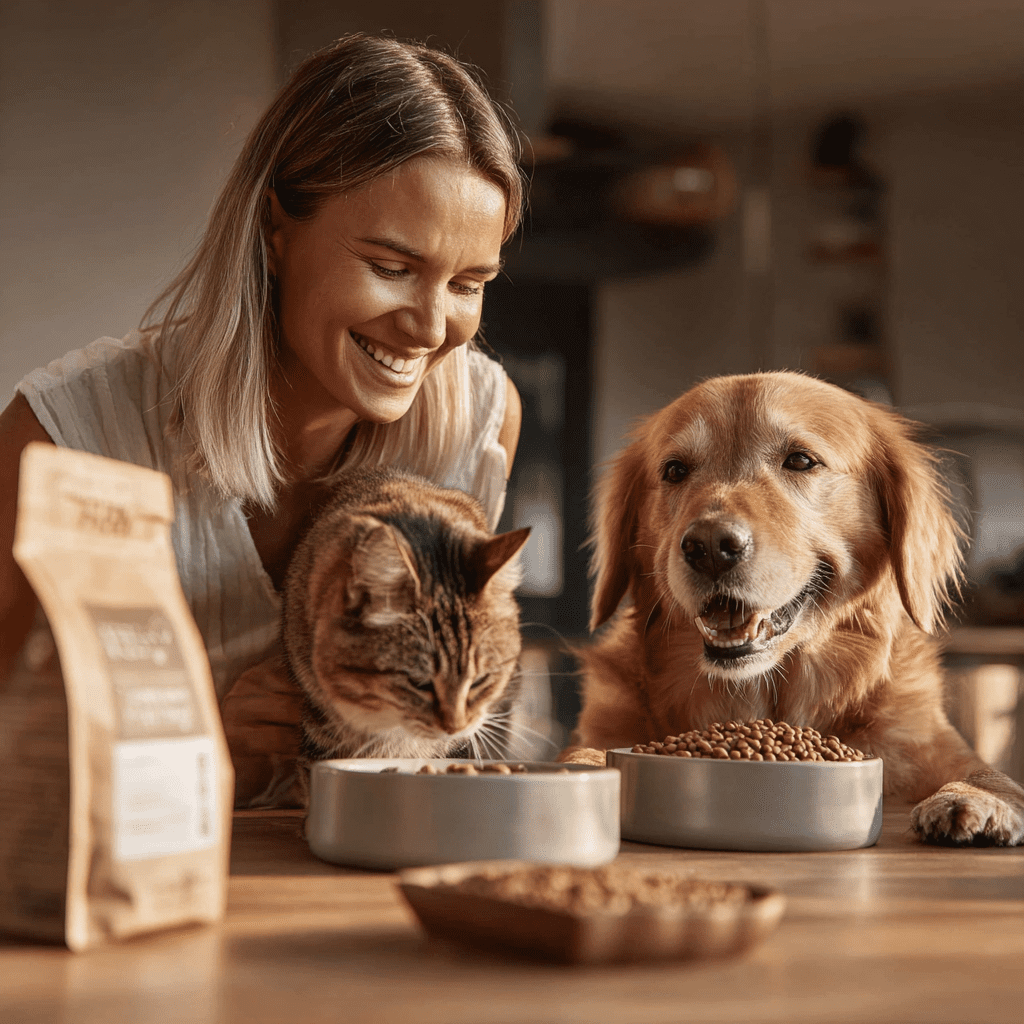Changing your pet’s food isn’t as simple as swapping one brand for another overnight. Whether you’re upgrading to a higher-quality food, adjusting for allergies, switching to a life stage-appropriate formula, or moving to a prescription diet—how you make that change matters.
A sudden diet change can lead to digestive upset, food refusal, or long-term health issues. But don’t worry! With the right approach, you can make the transition smooth, safe, and successful for your furry companion.
Let’s break down exactly how to do it, vet-recommended and pet-approved.
Why Change a Pet’s Diet?
Before you switch your pet’s food, it’s essential to understand the reason behind the change. Some common reasons include:
- Life stage changes (puppy/kitten to adult, adult to senior)
- Health concerns like allergies, diabetes, or kidney disease
- Better nutritional value or quality
- Weight management
- Food recalls or availability
- Your vet’s recommendation
Knowing the reason will help you choose the right food and approach.
Step-by-Step Guide to Transitioning Your Pet’s Food

1. Consult Your Veterinarian First
Before making any changes, talk to your vet. They can help:
- Identify the best food based on your pet’s needs
- Check for any underlying issues that might affect digestion
- Guide you through ingredient analysis and portions
2. Choose the Right Food
Look for:
- AAFCO-certified or veterinary-recommended brands
- Appropriate formulas (e.g., grain-free, senior, sensitive stomach)
- High-quality ingredients: whole proteins, balanced carbs, and essential fatty acids
Pro tip: Read the pet food label carefully. The first few ingredients say a lot about quality.
3. Use the 7-Day Transition Rule
A gradual change reduces the risk of vomiting, diarrhea, or refusal. Follow this schedule:
- Days 1–2: 75% old food, 25% new food
- Days 3–4: 50% old food, 50% new food
- Days 5–6: 25% old food, 75% new food
- Day 7: 100% new food
Some pets may need a slower transition over 10–14 days, especially if they have sensitive stomachs.
4. Observe Your Pet’s Response
Monitor:
- Appetite – Is your pet eating enthusiastically?
- Stool quality – Firm and regular, or loose and frequent?
- Energy levels – Same or improved?
- Skin & coat – Look for improvements or irritations
Keep a log if necessary, especially if multiple changes are being made.
5. Avoid Overfeeding or Mixing Too Many Foods
Stick to the new food and avoid introducing too many new treats or table scraps during the transition. Too much variety can confuse your pet’s digestive system.
Also, be mindful of portion control based on the new food’s caloric density.
6. Maintain Routine and Consistency
Pets thrive on routine. Feed at the same times each day. Don’t switch bowls or feeding locations suddenly. A stable environment reassures pets during a dietary change.
7. Be Patient with Picky Eaters
Some pets, especially cats, may take longer to accept a new food.
- Warm up wet food slightly to enhance aroma
- Mix a little low-sodium broth (check ingredients!)
- Use food toppers or mix in a small amount of the old food
Don’t starve your pet into accepting the new food, especially cats. Prolonged fasting can lead to dangerous liver issues like hepatic lipidosis.
Special Considerations for Dogs vs. Cats
Dogs:
- Generally more flexible with food changes
- Monitor for gas, bloating, and stool changes
- Some breeds (like Bulldogs) are more sensitive
Cats:
- Very sensitive to change—routine and scent matter
- Can go on hunger strikes if not eased into change
- Introduce new food with patience and consistency
When to Be Concerned
If you notice any of the following, contact your vet:
- Persistent vomiting or diarrhea
- Sudden loss of appetite for more than 24–48 hours
- Excessive scratching or signs of allergy
- Lethargy or unusual behavior
It could mean an allergy, intolerance, or unrelated illness.
Homemade or Raw Diet Transitions
If switching to a homemade or raw diet, it’s essential to:
- Work with a veterinary nutritionist
- Balance vitamins and minerals properly
- Ensure safe handling to prevent foodborne illness
Sudden raw transitions can shock the gut microbiome—go slowly, just like with commercial foods.
Affordable Tips for Food Transition
- Buy small bags or sample packs to test before committing
- Watch for promotions from reputable brands or vet clinics
- Join loyalty programs from pet stores
- Stick to proven formulas—don’t follow every trend
Long-Term Monitoring and Adjustments
Even after the transition, check in every few weeks:
- Is your pet gaining or losing weight?
- How’s their energy?
- Are you noticing any changes in skin, coat, or digestion?
Diet is never one-size-fits-all. Adjustments might be needed as your pet ages or their needs change.
Conclusion: A Smooth Transition Equals a Healthier Pet
Switching your pet’s diet doesn’t have to be stressful. With the right plan, patience, and vet guidance, you can ensure a successful transition that supports your pet’s health, longevity, and happiness.
Remember: It’s not just about food. It’s about setting your best friend up for a long, healthy life
